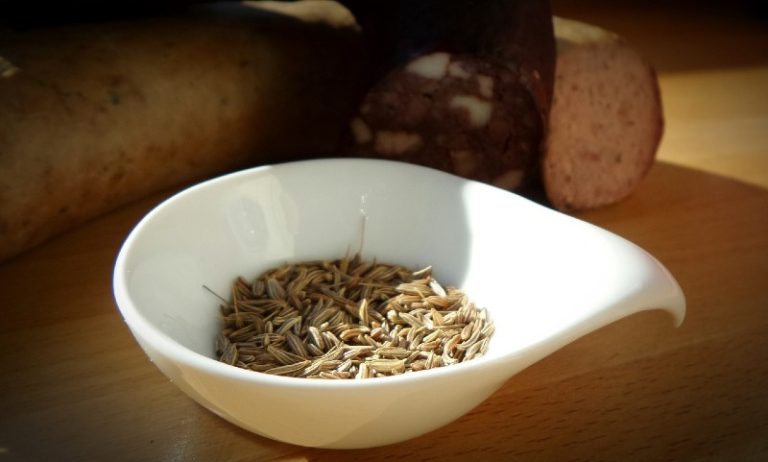Curry: Demystifying The Myth
The term Curry refers to any spiced, gravy-based dishes (usually side dishes) cooked in Asian styles. Generically, any wet side dish made out of vegetables or meat is historically referred to as a ‘Curry’ and it is assumed that the dish is supposed to be cooked with ‘Curry Powder’.
The truth is not all curries are made of ‘curry powders’ and not all South Asian recipes are curries. The roots of curry definitely come from India. The concept of curry was later brought to the West by British Colonialists in India from the 18th century.
As Wikipedia states, “The term curry may derive from the Tamil word kari (in Tamil this means sauce). It is understood that the British mistook the term, as the Tamil people call Kari Columbu which means meat gravy as being curry, derived from the usage of “Kari” in the Tamil language and other South Indian Dravidian languages, to connote some of the stew/gravy-like dishes eaten with rice.”
Another assumption is that the word ‘curry’ is derived from “Kadhi” which derives from the term “Kadhna” meaning “to simmer” in a KaRai (similar to a wok) denoting the cooking vessel used in Indian kitchens.
The commonly known ‘Indian Curry Powder’ is not any particular spice mix in a particular proportion, because ‘Curry’ is not just a single dish. The ready-made products which just sell as ‘curry powder’ are actually different versions of Garam Masala, or blend of ground spices.
Curries differ in their taste and content, not just between countries but also within countries. For example, the curries of India are different than those of South East Asia. And even though the word originates from India, every state in India takes pride in their own cuisine, which is as diverse as the culture and languages. The spices used are different in different dishes and also vary from region to region in India. Besides the spices, ginger, garlic, various kinds of spiced powders, tomato, yogurt, saffron, cream and dry fruits and nuts are also used to create curries.
It is a culinary art to play with the permutations and combinations of different spices. One single ingredient can be prepared in several ways just by changing the spices and you have a curry with completely new flavours – exotic & delicious.
Curry dishes are often given specific names that indicate what they are made of. Butter Chicken, Malai Kofta, Chicken Curry are to name a few. Mutter Paneer is the name for a curry made out of peas and homemade cheese, whereas Bhindi Masala is okra cooked in spices.
The history of spices dates back thousands of years, and they were not just used for their appetizing tastes but also for providing health and medicinal benefits. For example, turmeric is added to almost all Indian dishes, as this is what gives the yellow colour so specific to a curry, but it is also known to be an antiseptic. Fennel and carom seeds have digestive properties. The spices and the balance of amounts used to make a curry are aimed at general wellbeing as well as satisfying the taste buds.
Here are the recipes for two very simple curries that you will able to cook at home, one vegetarian and the other with chicken.
Khatti Meethi Lauki – the bottle gourd curry
Laukior Dudhi/Doodhi (as it is called in Hindi) is a type of Indian gourd which is beautifully white inside the outer green peel with a hint of sweetish taste and it is one of the most popular vegetables in an Indian home. It is usually known as the bottle gourd as the bottle shaped, hardened, ripened fruits are used to make bottles, vessels, instruments or pipes.
There is a great deal one can do with this versatile vegetable. Not having any strong flavours or much taste to itself, the soft mild flesh inside the lovely green peel absorbs and adjusts to whatever recipe it is used in. There are in dry stir fries, curries, with sea food or lentils, in desserts and soups.
Asafoetida (or hing) is an intriguing spice that imparts a very special flavour to this dish. Since the curry uses no onion, garlic or ginger the hing, as it tempers in the ghee, is a vital flavouring agent. Asafoetida is sap from the stem and root of a plant, dried into a hard resin. The smell of this spice in the raw uncooked form is strong and pungent; so unpleasant that it is often called as the devils dung, or the stinking gum. However, this initial pungent smell mellows and almost disappears, replaced by a smooth pleasant flavour when it is added to hot oil or ghee. The flavour is not the spicy, fiery kind, but more like leek or onion.
The resin form is hard and deep amber in colour It has to be powdered before it is used for cooking or medicinal purposes. I usually get Hing from India, in the hard resin form as you see above, as it retains the aroma longer than ground powder, and use a mortar and a pestle to grind it as I need it. In Indian grocery stores, the hing is usually found in powdered form. A little goes a long way when it comes to this spice; so only a tiny bit when seasoning and tempering to flavour food.
Ingredients: (serves 2-4 people as a side)
1 small bottle gourd
1 tablespoon gheeor oil
1/2 teaspoon cumin seeds/jeera
a very generous pinch of asafoetida
2 fresh green chili pepper (sliced if you like the heat, and if you don’t leave them whole)
1 small fresh tomato, pureed (or 3/4 tablespoons tomato paste + 1/4 cup water or 1/4 cup canned tomato puree)
1/4 teaspoon turmeric powder
salt to taste
2 teaspoon sugar (or to taste)
3/4 cup water
a good squeeze of lime or lemon juice
coriander/cilantro leaves to garnish (optional)
Method
Peel the gourd and chop it into 3/4 inch cubes; wash well and drain.
Heat ghee or oil in a deep pot. Add the pinch of asafoetida and then after a few seconds add the cumin seeds. When the seeds sizzle add the green chili peppers, chopped or whole. When the peppers sizzle and have a few brown spots, (less than a minute), add the tomato (fresh puree/canned puree/or the paste combined with water) to the pot. Add salt, turmeric and sugar and cook for 2 -4 minutes, until the tomato mushes and thickens a bit.
Add the chopped lauki/gourd, toss for the tomato mix to coat the pieces, cook at medium heat for 2 minutes uncovered. Add the water, cover and cook until the gourd is tender- it will look translucent. The curry will be lightly soupy. If you want less liquid, simmer it a little bit longer until you get the desired consistency.
Serve hot as a side with a drizzle of lemon/lime juice and garnished with fresh chopped cilantro.
The dish is best served over hot rice or with warm bread to dunk it in the beautifully flavoured curry.
Mangshor Jhol – Bengali Mutton Curry
Jholin Bengal refers to a mildly spiced thin stew kind of preparation with either just vegetables, or fish/egg/meat as the main ingredient. Different kinds of vegetables along with the egg/meat/fish are usually used. With meat and egg, the vegetable that pairs best would be tomatoes or potatoes or both. This Manghor (Mutton/Lamb)Jhol uses very few spices. Traditionally mustard oil is used to marinate the meat. This recipe may be done with chicken (Murgir Jhol) lamb or goat. Goat meat is popularly used, but if it is not available, it may be substituted with lamb.
The recipe pairs best with hot rice or roti and a chuntey
Ingredients:
1.25 lbs mutton with bones (lamb or goat), cut into 2 inch pieces
For marinating:
3 tablespoons strained or Greek yogurt
1/2 teaspoon turmeric
1/2 teaspoon red chili powder
1 tablespoon mustard oil
salt
2 inch fresh ginger root,peeled and made into a paste or grated
1.5 tablespoon garlic paste
2 green chili pepper, crushedinto a coarse paste
For the sauce:
3 medium red onion, sliced in thin half moons(about 4 cups)
1/6 cup oil (prefer. mustard oil)
2 bay leaves
1 red dry chili pepper
3 medium potatoes, peeled and each divided into 4 parts
salt
1/2 teaspoon + 1/2 teaspoon turmeric
2 teaspoons red chili powder/cayenne (Optional or adjust to taste)
2.5 teaspoons coriander powder
2 teaspoons roasted ground cumin
Fresh lime – to drizzle on the curry after cooking
Method
Wash the meat well and pat it dry. Whisk all ingredients for the marinade and in a big no reactive bowl, combine well with the meat. Let the marinade sit for at least 2 hours or overnight.
Peel the potatoes, cut them to size, and sprinkle salt and 1/2 teaspoon turmeric powder on them. Rub the salt and the turmeric on the potatoes. Heat about 3/4 tablespoon oil in a deep pan or pressure cooker and fry the potatoes on high heat until they start browning on the edges – about 2-3 minutes. Remove with a slotted spoon and set aside.
In the same pot add the rest of the oil and add the red dry chili pepper and the bay leaves. When the pepper turns dark, add all the sliced onions and fry them at high heat for about 12-15 minutes, while tossing them frequently till they start to brown.
Add the marinated meat to the pan (save and set aside any leftover marinade) and add the rest of the turmeric, salt, chili/cayenne powder, coriander powder and roasted cumin powder. Toss well and cook the meat. You will have to toss the mixture frequently to prevent it from sticking to pan. It will take about 15 minutes for the meat to be browned and for the liquid to dry up.
Add 4 cups of warm water, add the potatoes and cover the pot with a tight fitting lid. Cook till the meat is almost done and tender, falling off the bone.
Drizzle with fresh lime juice right before serving.
Serve with hot rice or Naan or any flat breads.
Author Contact Details
Soma Rathores food blog: www.ecurry.com
Follow Soma on twitter: @Soma_R


